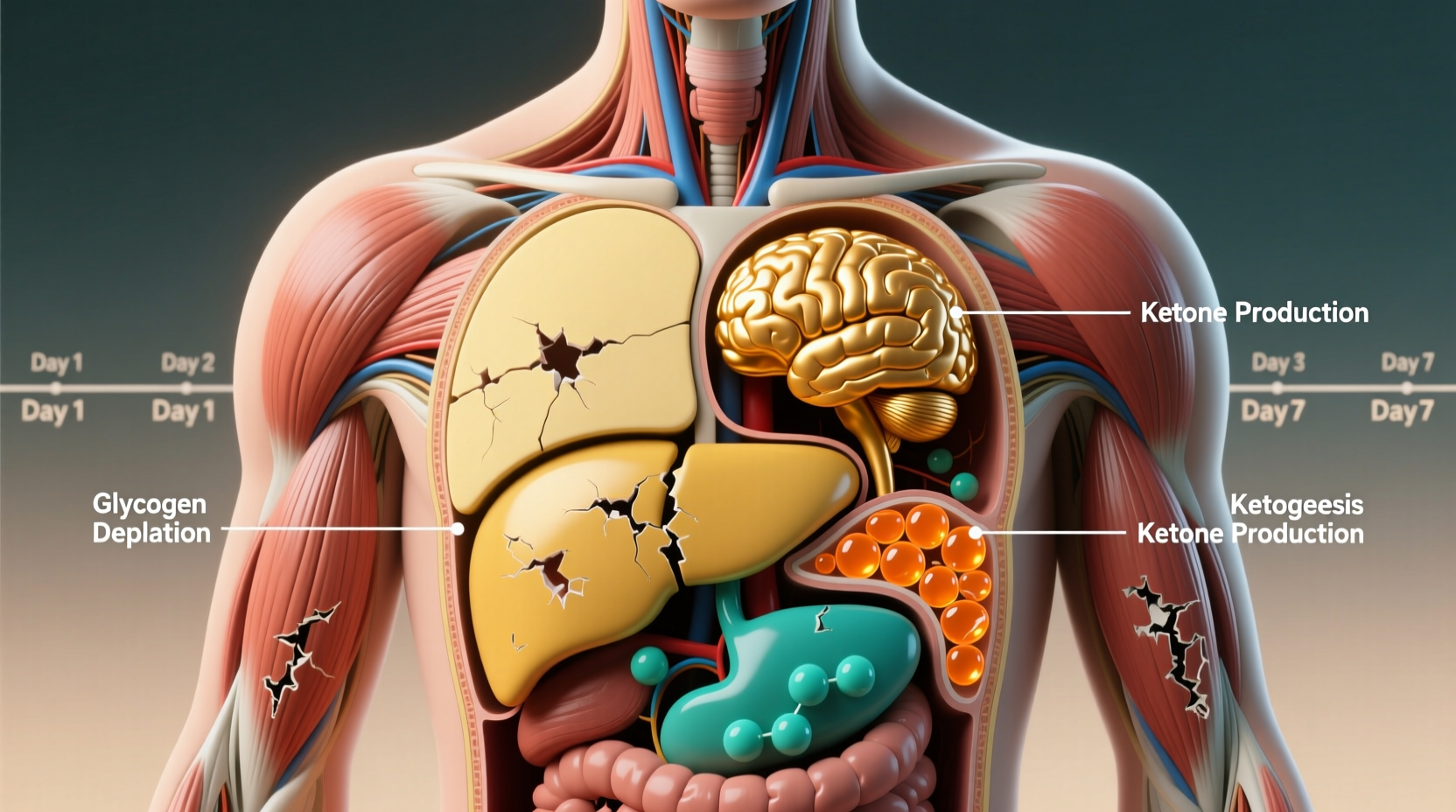Most healthy adults can survive approximately 3-8 weeks without food, but this timeframe varies significantly based on body fat percentage, hydration status, overall health, and environmental conditions. Complete starvation becomes life-threatening after about 3 weeks for many individuals, with death typically occurring between 45-60 days when no food is consumed but water is available.
Understanding human survival limits without food isn't just theoretical knowledge—it could be critical information during emergencies or when evaluating extreme dieting practices. While water remains the absolute priority for survival (humans can only last 3-4 days without it), the body has remarkable adaptations for enduring food scarcity. This comprehensive guide examines the science behind starvation timelines, physiological changes at each stage, and the critical factors that determine how long someone can actually survive without nourishment.
The Body's Energy Reserves: How We Cope Without Food
When food intake stops, your body immediately begins a carefully orchestrated metabolic shift to preserve vital functions. Within the first 24 hours, your system transitions from glucose-based energy to tapping into stored glycogen in the liver and muscles. This reserve typically lasts about 24-48 hours before the body initiates ketosis—a metabolic state where fat stores become the primary energy source.
Medical research from the National Institutes of Health shows that ketosis provides significant survival advantages, slowing muscle breakdown while maintaining brain function. However, this adaptation has limits. After several weeks without food, the body begins breaking down protein from muscles and organs to create glucose for essential brain functions—a process that becomes increasingly dangerous over time.

Starvation Timeline: What Happens Day by Day
Survival without food follows a predictable physiological pattern, though individual variations exist based on multiple factors. Here's what typically occurs as days pass with no food intake (assuming adequate water):
| Time Period | Physiological Changes | Physical Symptoms |
|---|---|---|
| Days 1-3 | Glycogen depletion, ketosis begins | Hunger pangs, irritability, mild fatigue |
| Days 4-7 | Full ketosis, fat metabolism dominant | Reduced hunger, mental clarity, possible dizziness |
| Weeks 2-3 | Protein breakdown begins, metabolic rate drops 20-30% | Severe weakness, difficulty concentrating, cold intolerance |
| Weeks 4-6 | Organ function impairment begins | Extreme fatigue, edema, compromised immunity |
| Weeks 6-8+ | Critical organ deterioration, heart muscle wasting | Cardiac arrhythmias, respiratory failure, coma |
Factors That Significantly Impact Survival Duration
While the 3-8 week range represents typical survival without food, several critical factors can dramatically extend or shorten this timeline:
- Body fat percentage - Individuals with higher body fat can survive longer as fat stores provide energy and insulation
- Hydration status - Access to water doubles or triples survival time compared to complete dehydration
- Environmental conditions - Cold temperatures increase caloric needs, reducing survival time
- Overall health - Pre-existing medical conditions significantly impact resilience
- Age and metabolic rate - Children and elderly generally have shorter survival windows
Documented cases from medical literature illustrate these variations. Research published in the British Medical Journal analyzed hunger strike data showing survival durations ranging from 27 days to over 70 days depending on individual factors. The longest medically documented case of complete starvation with water was 73 days, recorded in a 1985 study of political prisoners.
When Starvation Becomes Life-Threatening
The transition from survivable fasting to dangerous starvation occurs around the three-week mark for most healthy adults. According to clinical guidelines from the Centers for Disease Control and Prevention, critical warning signs that indicate immediate medical attention is needed include:
- Heart rate below 50 beats per minute
- Body temperature below 95°F (35°C)
- Severe electrolyte imbalances
- Persistent confusion or disorientation
- Inability to stand without assistance
Refeeding syndrome represents another critical danger when nutrition is reintroduced after prolonged starvation. This potentially fatal condition occurs when electrolytes rapidly shift during the reintroduction of food. Medical supervision is essential for anyone who has gone without food for more than 10 days before attempting to eat again.
Therapeutic Fasting vs. Dangerous Starvation
It's crucial to distinguish between medically supervised therapeutic fasting and dangerous starvation. Short-term fasting (24-72 hours) under medical guidance can have health benefits for some individuals, while uncontrolled starvation triggers progressively dangerous physiological changes.
The Nature journal published research showing that intermittent fasting protocols differ fundamentally from starvation in their metabolic effects. Therapeutic approaches maintain electrolyte balance and monitor vital signs, whereas uncontrolled starvation leads to progressive organ deterioration.
If you're considering extended fasting for health reasons, consult a physician first. Never attempt fasting beyond 72 hours without medical supervision, especially if you have pre-existing health conditions.
When to Seek Immediate Medical Help
Recognizing the signs of dangerous starvation could save a life. Seek emergency medical attention if someone exhibits:
- No food intake for more than 7 days with declining energy levels
- Syncope (fainting) or near-fainting episodes
- Chest pain or irregular heartbeat
- Severe dehydration symptoms alongside food refusal
- Signs of refeeding syndrome when attempting to eat again
Emergency departments follow specific protocols for treating starvation cases, focusing initially on electrolyte stabilization before gradually reintroducing nutrition. Early intervention dramatically improves outcomes for individuals experiencing prolonged food deprivation.











 浙公网安备
33010002000092号
浙公网安备
33010002000092号 浙B2-20120091-4
浙B2-20120091-4